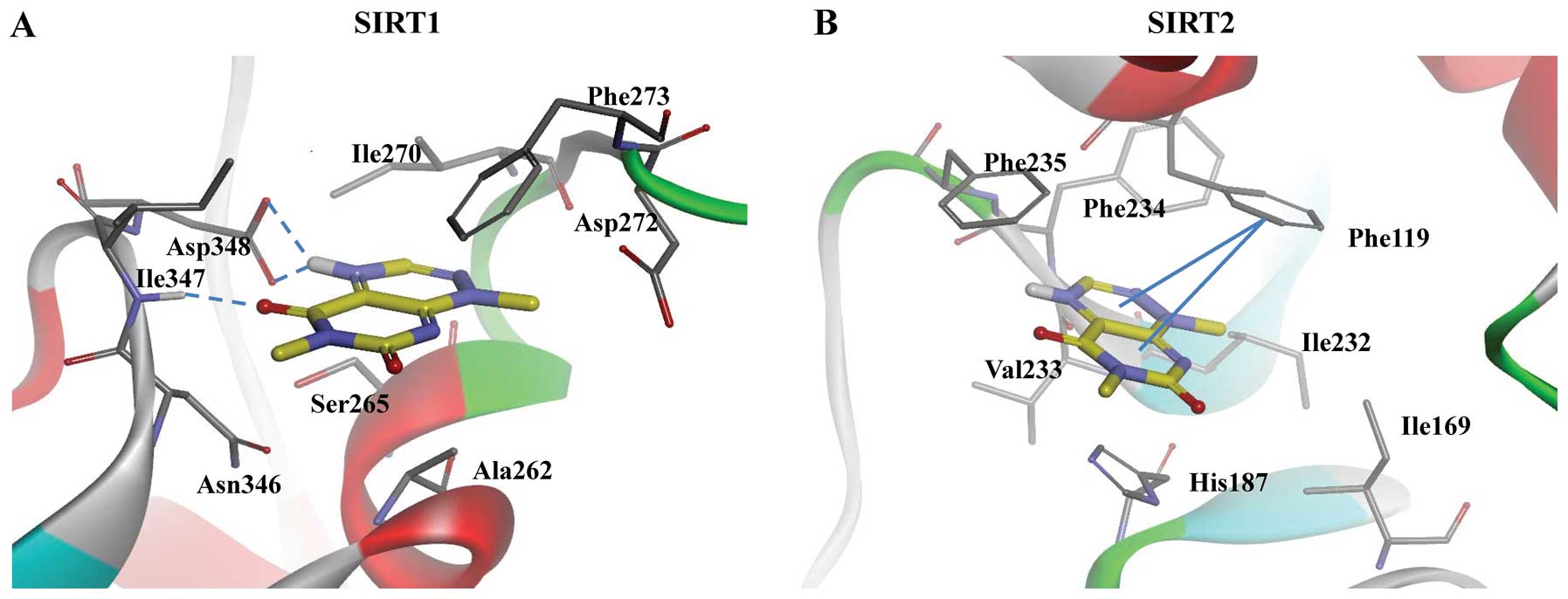 |
| Structure of Sirtuin 1 & 2 |
Loss of Sirt1 Promotes Prostatic Intraepithelial Neoplasia, Reduces Mitophagy, and Delays Park2 Translocation to Mitochondria - The American Journal of Pathology
Prostate cancer affects more than 23,000 men this year in the USA however the individual genes that initiate prostate cancer formation are poorly understood. Finding an enzyme that regulates this process could provide excellent new prevention approaches for this common malignancy. Sirtuin enzymes have been implicated in neuro degeneration, obesity, heart disease, and cancer. Research published online in The American Journal of Pathology show the loss of one of sirtuin (SIRT1) drives the formation of early prostate cancer (prostatic intraepithelial neoplasia) in mouse models of the disease.
"Using genetic deletion we found that SIRT1 normally restrains prostatic intraepithelial neoplasia in animals. Therefore too little SIRT1 may be involved in the cellular processes that starts human prostate cancer," said Dr. Richard Pestell, M.D., Ph.D., MBA, executive Vice President of Thomas Jefferson University and Director of the Sidney Kimmel Cancer Center. "As we had shown that gene therapy based re expression of SIRT1 can block human prostate cancer tumor growth, and SIRT1 is an enzyme which can be targeted, this may be an important new target for prostate cancer prevention."
How Does Prostate Cancer Form?
How does prostate cancer form? Parkinson's Link? - The Latest Health News
| Linkages of SIRT1 |
The Roles of SIRT1 in Cancer
The sirtuin family has emerged as important regulators of diverse physiological and pathological events, including life-span extension, neurodegeneration, age-related disorders, obesity, heart disease, inflammation, and cancer. In mammals, there are 7 members (SIRT1-SIRT7) in the sirtuin family, with the function of SIRT1 being extensively studied in the past decade. SIRT1 can deacetylate histones and a number of nonhistone substrates, which are involved in multiple signaling pathways. Numerous studies have suggested that SIRT1 could act as either a tumor suppressor or tumor promoter depending on its targets in specific signaling pathways or in specific cancers. This review highlights the major pathways regulated by SIRT1 involved in tumorigenesis.
 |
| Causal Linkages to Parkinson's and Huntington's |
Sirtuins are highly conserved NAD+-dependent enzymes that have beneficial effects against age-related diseases. Aging is the major unifying risk factor for all neurodegenerative disorders. Sirtuins modulate major biological pathways, such as stress response, protein aggregation, and inflammatory processes, that are involved in age-related neurodegenerative diseases. Therefore, sirtuins have been widely studied in the context of the nervous system and neurodegeneration. They are especially interesting because it is possible to alter the activities of sirtuins using small molecules that could be developed into drugs. Indeed, it has been shown that manipulation of SIRT1 activity genetically or pharmacologically impacts neurodegenerative disease models. This review summarizes recent research in sirtuin neurobiology and neurodegenerative diseases and analyzes the potential of therapeutic applications based on sirtuin research.
No comments:
Post a Comment